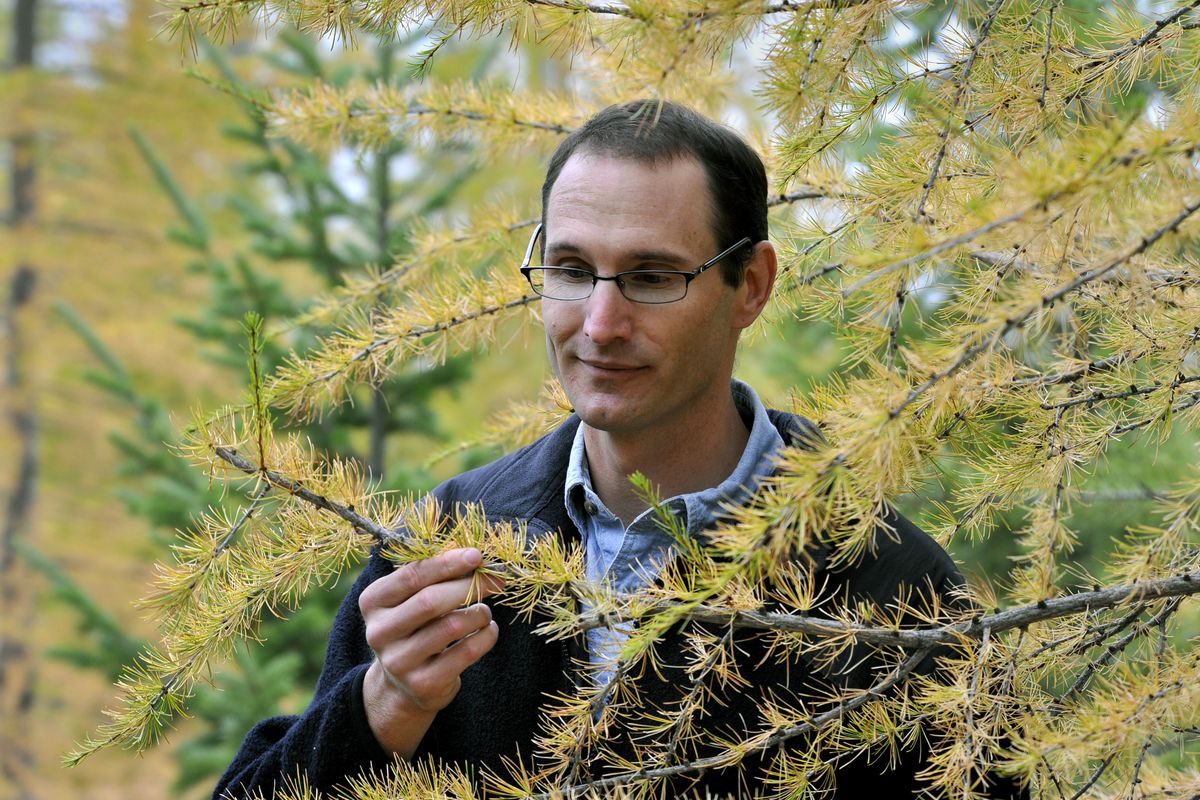Autumn takes hold in the region
Western larch trees set themselves apart from their coniferous cousins

Western larches are the showy paradox of Inland Northwest forests.
Each fall, the trees outshine other conifers with a short-lived burst of gold-hued beauty. At Sherman Pass in the Colville National Forest, larch-dominated hillsides attract tourists from as far away as Seattle. The color extends to the forest floor, where wildlife and people trek through a glowing dusting of fallen needles.
Why do larches turn color and shed their needles, when most cone-bearing trees keep theirs? Even tree experts don’t have definitive answers.
“I don’t know if you can give the perfect ‘Why?’ ” said James Pass, a Forest Service silviculturist in Kettle Falls, Wash.
Theories point to competitive advantages, he said. Without needles, western larches shed snow during the winter, preventing ice buildup and broken limbs. Annual needle loss also helps the trees fight off pests and disease.
“Being a deciduous conifer is unique in this part of the country,” said Katy Kavanagh, a forest ecologist at the University of Idaho’s College of Natural Resources.
Unlike ponderosa pine – whose needles last three to five years – western larch “actually build a needle that’s cheaper or less expensive,” she said. “That’s one of their strategies – they invest less in the individual needles.”
The temporary needles are still extremely efficient, she said, resulting in high photosynthesis rates.
Western larch – commonly called “tamarack” – is abundant at Sherman Pass along state Route 20. Big fires in the early 1900s created the openings that sun-loving larches need to regenerate, Pass said. Knee-high larches, visible in some spots, are the result of a more recent fire.
Pass calls western larches “superlative trees.”
They’re aggressive self-starters. As juveniles, their rapid growth rate helps them compete with other species for space on the forest floor. As adults, their bark can be a foot thick, which helps them survive wildfires.
Individual western larch can live 900 years, but ancient trees are extremely rare, Pass said. Most of the old-growth western larch was logged a century ago for its valuable timber. The trees are also favorites of firewood cutters because of the wood’s high heat output.
On a recent trip to the Colville National Forest, Pass pointed to a 100-foot-tall larch with a grizzled top. Its age: about 350 years.
“This guy survived what was really a hot fire,” Pass said, noting charred spots on the trunk.
The western larch has a devoted following, said Franklin Pemberton, a Colville National Forest spokesman. At the forest headquarters, the receptionist fields about a half-dozen calls daily this time of year from people who want to know when the larches will reach their peak color.
“There’s a dedicated group who are fans in a big way,” Pemberton said. “It’s a little cult following.”
In the future, larch fans will likely have to travel farther north for their color fix. Western larch is one of the species that will lose ground from climate change, scientists predict.
At the Rocky Mountain Research Station in Moscow, Gerald Rehfeldt and a Canadian counterpart studied the distribution of western larch under three climate change scenarios. Over the next 80 years, larch will become much rarer – possibly extinct – in the Inland Northwest, their models indicate.
Hotter, drier summers and mild winters will shrink larch habitat, pushing the trees farther north, the researchers said. Central Canada could become the new stronghold for western larch.
“It’s an early indication of climate change’s effects,” said Dennis Ferguson, who also works at the Rocky Mountain Research Station. “I think these things are real.”